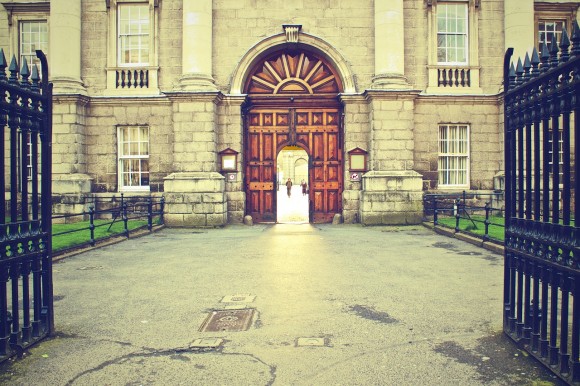By Cathy Davidson
Cross-posted to the Futures Initiative HASTAC Group.
As we begin to assemble the documents, materials, models, and course materials for “Mapping the Futures of Higher Education,” the first course offered by the Futures Initiative, I will keep posting some of our central documents. We will be hosting several livestreamed open sessions devoted to the methods, theories, ideas, models, and practices of this course. Yesterday I gave a “baker’s dozen” of central ideas behind peer-led, interactife, connected learning, “What Is Learning?”
This blog addresses the question of WHY higher education is still important–and why it needs to change:
The Big “Why”? Why are we doing all of this? We are going into this bold experiment in higher education for a few reasons that will seem contradictory.
- First: higher education is still the best pathway to success. We believe higher education is crucial to a productive, happy, independent, socially responsible adult life. In terms of pure employability, those with more education continue to receive employment at higher rates than those with less education and they earn more too. Higher education (for traditional or returning students) is by no means the only road to success but a college diploma is the single most visible “marker” that you are able to voluntarily dedicate yourself to a long-term goal without a guaranteed pay-off and that you can accomplish that goal independently (without parents or laws requiring it). Although there are as many kinds and forms of higher education as there are college students, this voluntary commitment to a long-term goal is definitional and crucial. Exploring the best pedagogical methods that ensure student success is our first priority.
- Second, right now only over half of those starting college finish without a degree. There is tremendous variation here. At elite private schools, as studied by economist Caroline Hoxby, over 90% receive degrees and the most elite schools spend twenty times more resources than public schools specifically on instruction, support, and facilities designed ways to ensure student happiness, success, and completion. Community colleges–where students work full-time or more, do not live in residences dedicated to their lives as students, and have family or other responsibilities–the success rate is 20-25%. The interactive methods we will be using in this class are based on research into ways of promoting student success–student study groups, peer-leadership, interest-driven learning (even in required fields), peer-mentoring, public contribution to knowledge, and analog versions of the constant feedback on learning progress and understanding that comes from adaptive learning (see Think-Pair-Share below). NB:These methods work for everyone–from doctoral students to economically disadvantaged middle-school students. (The best study group research was undertaken at Harvard and replicated in Chicago urban public middle and high schools.)
- Third, we know what we need to do to improve higher education for the world we live in now. Much about contemporary US institutions of higher education was designed during the “Age of the University,” the period 1865-1925, and specifically for the Taylorized industrial age and the creation of what has been called the “professional managerial class.” Education (kindergarten through professional school) was redesigned for standardization, hierarchy, regimentation, division of labor, distinctions between leisure and work, scientific measurement of productivity, and other ways of dividing work into measurable, distinct segments. The “invention of failure” at this time was implicity about new mechanisms for sorting out the elite worthy from everyone else. We cannot afford that world anymore. Higher education needs to be revitalized and transformed for the contemporary world of cultural diversity, technological complexity, constant change, collaboration, iteration, fusion of work and life, an abundance of information, and the “internet of everything” where data becomes pre-selection and pre-segregation of work, life, social, and other “choices.” We see graduate students today as the vanguard of the next generation of higher education leaders and thinkers grappling with these issues. Breaking down the boundaries across disciplines, between theory and practice, between thinking and making, and between “school” and the real world, and emphasizing the connection between innovation and equity are key to transforming higher education now.
- Fourth, we need more college professors dedicated to ensuring student success. Rather than seeing the future of professors of higher education as endangered, we agree with the Department of Labor Statistics predictions that the single biggest threat to the future of the American economy is a lack–not a surplus–of Americans with advanced education. By one estimate, we need to graduate a significantly higher percentage (yesterday, someone authoritative said 40% more) of college students by 2025 than we are currently graduating. Championing the reinvestment in higher education as a public good is another motivation for this course. So is finding the best ways to ensure student success and to ensure that the graduate students leaving this class are experts at the best ways of thinking, researching, and practicing a pedagogy of success, not a pedagogy of failure.


